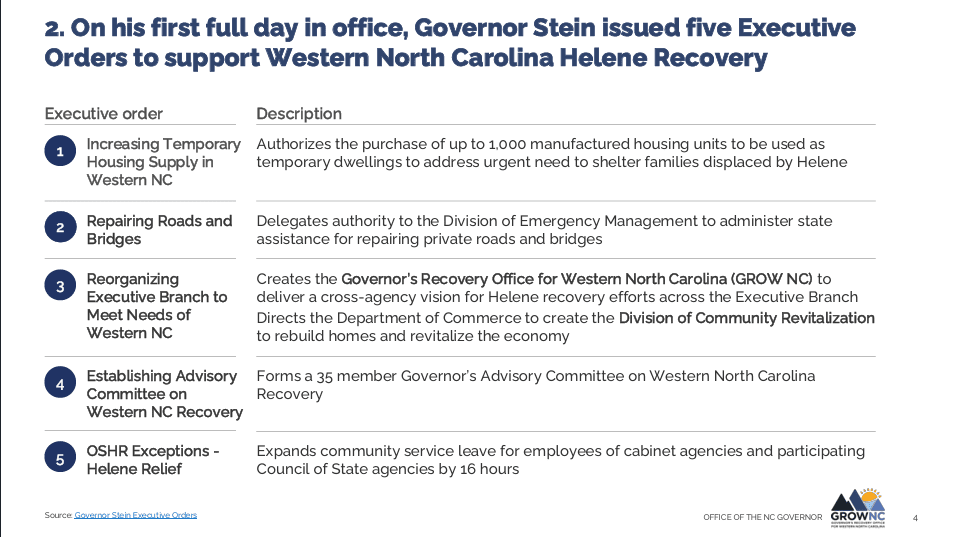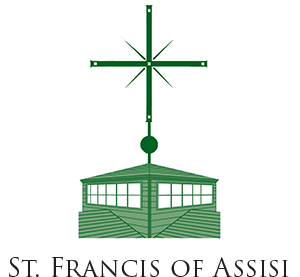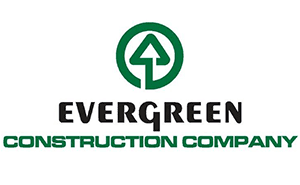On Wednesday January 29, 2025, the North Carolina General Assembly’s long legislative session truly began. Both chambers convened and committee meetings were held both Wednesday and Thursday regarding Hurricane Recovery efforts in the east and the west. In addition, chamber rules were amended and bill filing began.
Throughout the day, members from both chambers on and off the floor took a moment to honor Representative Joe John who passed away on January 22, 2025 after a long battle with cancer. Representative John was a former judge who served four full terms in the House. He was elected to a fifth term in November before he announced his resignation on January 20, 2025.
This week, Phil Rubin, a former assistant US attorney and NC Justice Department lawyer who now works for Meta was selected by the Wake County Democratic Party Executive Committee to replace Representative John.
At 2:00pm, the House Select Committee on Hurricane Helene held its first committee meeting of the year. Representative Dudley Greene – R – District 85 presided over the meeting, his district includes 4 of the over 30 counties impacted by Helene – Avery, McDowell, Mitchell, and Yancey counties.
The meeting covered three topics: Hurricane Helene Recovery Updates & Executive Orders, FEMA Temporary Housing Updates, and an overview of the Federal Recovery Resources and the American Relief Act of 2025.
The first topic was covered in a presentation by Matt Calabria, Director of the newly formed Governor’s Recovery Office for Western North Carolina (GROW NC), and Jonathan Krebs, the Western North Carolina Recovery Advisor for GROW NC. The presentation covered six areas: the damages and needs assessment for Hurricane Helene, the vision for recovery and recent executive orders from Governor Josh Stein, the newly formed Division of Community Revitalization, federal funding requests, and near term priorities.

Director Calabria also reviewed the current intended structure for GROW NC within the state ecosystem as it relates to the Governor, State Agencies, stakeholders, and a new advisory committee on WNC Recovery. The Division of Community Revitalization’s intended focus will be to execute the forthcoming HUD Action Plan, which will guide how the state uses the Community Development Block Grant – Disaster Recovery funding for areas such as housing and small business supports. Clear expectations, robust financial oversight, transparency, and engagement with stakeholders and partners were heavily emphasized when describing the approach that the new division would take to implement the CDBG-DR HUD Action Plan, which once finished must be submitted and approved before any funding can be drawn down.
The presentation continued and highlighted the significant gap between what was requested from the federal government and the estimated portion of federal funds to North Carolina. Of the $25.7 Billion requested, about $15.7 Billion is expected, barring any issues such as the federal funding freeze that many were and continue to be worried about. North Carolina has continued to make requests from the Trump Administration regarding disaster recovery resources for North Carolina. On January 24, when the President was visiting Western North Carolina, he met with Governor Stein to discuss these requests, which include extending the 100% federal cost-share period for applicable streams of FEMA funding for another six months and encouraging Congress to amend the Stafford Act to allow the repair or replacement of private roads and bridges to qualify for FEMA funding.
In the near term, here are some of the critical areas they stated must be addressed quickly:
- Debris Removal, from waterways and right-of-way routes in particular.
- Housing Recovery, including temporary and permanent housing solutions.
- Economic Revitalization, including for small businesses and larger industries.
- Roads and bridge repair for both public and private routes.
Of the estimated $59.6 Billion in total estimated damage and needs, damages to Housing, Economy, Transportation, and Utilities represent 82% of that total estimate.
The second and third parts of the meeting included an update from the NC Department of Emergency Management Director Will Wray and an overview from Mark White of the Fiscal Research Division on federal funding included in the American Relief Act of 2025 and North Carolina, as well as the process and timeline for actually pulling down the federal funds for recovery efforts in Western NC.
In NCEM Director Wray’s presentation, he reviewed the different FEMA Sheltering and Housing Solutions ranging from displacement assistance to direct leasing and transportable temporary housing units. Below is an excerpt from his presentation highlighting recover work completed so far and how much money has been dispersed as of January 28, 2025.

To listen to the audio from the meeting, click here.
On Thursday January 30, 2025 the House and Senate convened briefly in the morning. Simultaneously, the Joint Legislative Commission on Governmental Operations Subcommittee on Hurricane Response and Recovery had its first meeting of the year, which began at 8:30am and adjourned around 11:45 am.
A majority of the meeting was spent on the first testimony given by Pryor Gibson, the interim director of the North Carolina Office of Recovery & Resiliency (NCORR). During Gibson’s testimony, he presented updated figures from recent month’s progress and figures explaining the agency’s request for $217 million in new funding in order to complete recovery efforts in Eastern North Carolina for those impacted by Hurricanes Matthew and Florence. In November 2024, at the last meeting of the year, the estimated need was $264 million. Since then, lawmakers have allocated $80 million, and the updated ask of $217 million does not include this allocation.

Please note, interim Director Gibson noted that there is a typo in row a) for unmet funding needs, the correct number for unmet needs in Step 7 is $89M not $8M.
Similar to other meetings over the last two years, various members of the committee continue to express concern, urgency, and ultimately frustration with NCORR. When asked about a timeline for completing recovery in Eastern North Carolina, Pryor Gibson re-emphasized the importance of the funding request as well as the infrastructure for contractors. He estimated that with funding and the pipeline of contractors intact, the 1,150 homes in the program could be completed by the end of 2025 or early 2026.
The questions for interim director Gibson were many. Several members asked about whether or not NTPs or Notices to Proceed had been halting, how much money was available to NCORR at that very moment, what the ratio of state to federal dollars throughout recovery in Eastern North Carolina has been, and the estimated cost of temporary rental assistance on a monthly basis. Many also chose to emphasize the recovery in the Western part of our state must go differently, it simply has to. The final 30 minutes of the meeting included presentations from Jonathan Krebs, Western North Carolina Recovery Advisor, and Stephanie McGarrah, Director of the newly formed Division of Community Revitalization (DCR) within the state Department of Commerce. Jonathan Krebs reviewed the mission and structure of GROW NC once more as well as the functions that they would use to accelerate recovery and drive delivery. In Director McGarrah’s presentation, she highlighted key lessons that were learned from observing the experience of NCORR and her own experience working in the Pandemic Recovery Office (PRO). She also provided an update on the HUD Action Plan for Helene and discussed Reporting and Transparency.
Although the committee was not able to spend as much time asking questions of Director McGarrah and Jonathan Krebs, it appeared that although there is still concern, there also seems to be hope for a recovery that could be accomplished in Western North Carolina with the lessons learned from NCORR and the support of the North Carolina Legislature along with key community and field expertise.








